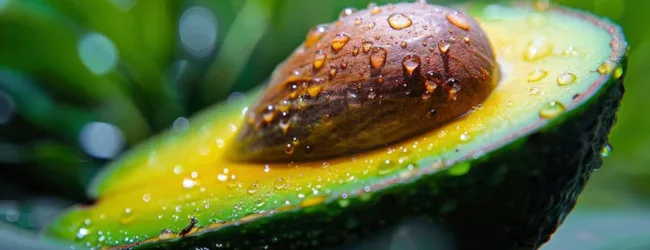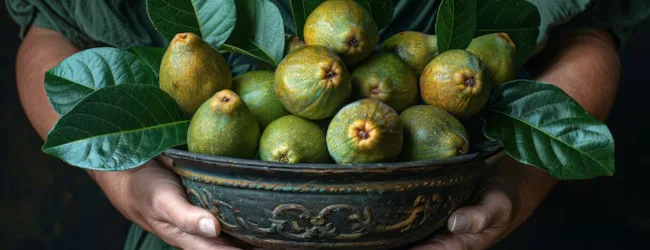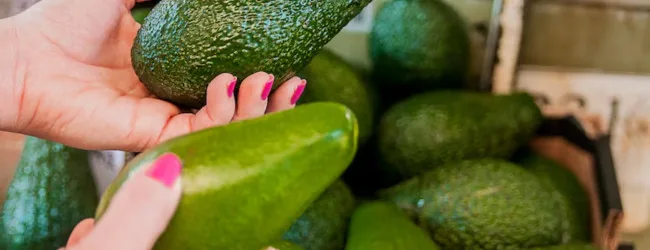Table of contents
The creamy, nutrient-rich avocado, once considered an imported delicacy in India, is rapidly gaining popularity among health-conscious consumers. This surge in demand has opened up exciting opportunities for Indian farmers looking to diversify their crops and tap into a high-value market. Avocado farming in India, while still in its nascent stages compared to other fruit crops, holds immense potential for profitability and sustainability. This comprehensive guide will walk you through the essential steps to successfully start your own avocado farming venture in India, exploring the nuances of cultivation, business advantages, and the promising future of this “green gold.”
Understanding the Avocado

Before diving into cultivation, it’s crucial to understand the basics of the avocado tree and its fruit:
- Botanical Classification: Avocado ( Persea americana) belongs to the family Lauraceae, which also includes cinnamon and bay laurel.
- Fruit Characteristics: The avocado fruit is a single-seeded berry with a creamy flesh and a buttery texture. Its nutritional profile is impressive, rich in healthy monounsaturated fats, vitamins (K, C, E, B-vitamins), and minerals (potassium).
- Climatic Requirements: Avocados thrive in warm, humid climates with well-defined wet and dry seasons. They are sensitive to frost, especially young trees. Ideal temperatures range from 15°C to 30°C.
- Soil Preferences: Deep, well-drained, and slightly acidic to neutral soils (pH 5.5-7.0) are best suited for avocado cultivation. Heavy clay or waterlogged soils can lead to root rot.
- Varieties Suitable for India: Several avocado varieties can be successfully grown in India, depending on the specific agro-climatic conditions of the region. Popular choices include:
- Hass: Known for its excellent flavor, creamy texture, and long shelf life. It turns dark purple-black when ripe.
- Fuerte: Pear-shaped with green skin that remains green when ripe. It has a rich, nutty flavor.
- Pinkerton: Elongated fruit with a small seed and good flavor. Matures later in the season.
- Thane: A popular Indian variety adapted to local conditions, known for its good yield.
- Pusa: Another Indian variety developed for local climates.
- Other promising varieties: Local selections and introductions from other tropical and subtropical regions are also being trialed in different parts of India.
- Pollination: Some avocado varieties require cross-pollination for optimal fruit set. Planting compatible pollinizer varieties within the orchard is often necessary.
💡Pro Tip: If you want to start a business but have too many doubts, connect with a business expert from Boss Wallah for guidance – https://bw1.in/1116
Step by Step Guide on How to Start Avocado Farming in India

Embarking on avocado farming requires careful planning and execution. Here’s a detailed step-by-step guide tailored for Indian conditions:
- Thorough Research and Market Analysis:
- Study Local Climate and Soil: Analyze the specific agro-climatic conditions of your region. Determine the suitability for avocado cultivation based on temperature, rainfall patterns, humidity, and potential frost risk. Conduct detailed soil testing to assess its suitability and identify any necessary amendments.
- Market Demand Assessment: Research the current and projected demand for avocados in your local, regional, and national markets. Identify potential buyers (wholesalers, retailers, processors, exporters). Understand consumer preferences for different varieties and quality standards.
- Variety Selection Based on Location and Market: Choose avocado varieties that are well-adapted to your climate and have good market demand. Consider planting a mix of varieties with different maturity times to extend the harvesting season. Research the pollination requirements of your chosen varieties and select appropriate pollinizers.
- Visit Existing Avocado Farms: If possible, visit successful avocado farms in India or similar climatic regions to learn firsthand about their practices, challenges, and successes.
- Land Selection and Preparation:
- Choose Well-Drained Land: Select land with good drainage to prevent waterlogging, which can lead to root rot. Avoid low-lying areas prone to water accumulation.
- Clear the Land: Remove any existing vegetation, rocks, and debris. Level the land if necessary, ensuring proper slope for drainage.
- Soil Amendment: Based on your soil test results, amend the soil with organic matter (composted manure, vermicompost) to improve fertility, structure, and water retention. Adjust the pH if necessary based on recommendations.
- Layout and Spacing: Plan the layout of your orchard, considering the mature size of the chosen avocado varieties. Recommended spacing typically ranges from 6-10 meters between trees and rows, depending on the variety and planting system. Mark planting points clearly.
- Dig Planting Pits: Dig pits of appropriate size (e.g., 1m x 1m x 1m) at the marked locations. Allow them to weather for a few days before planting.
- Sourcing Quality Planting Material:
- Choose Reputable Nurseries: Obtain healthy and disease-free grafted avocado saplings from certified and reputable nurseries. Grafting onto suitable rootstocks ensures desirable traits like disease resistance and vigor.
- Select Healthy Saplings: Look for saplings that are 1-2 years old, with a well-developed root system, a straight and sturdy stem, and healthy green leaves. Avoid plants with signs of pests, diseases, or root damage.
- Consider Tissue Culture Plants: Tissue culture plants can offer uniformity and disease-free planting material, but ensure they are acclimatized to field conditions.
- Planting the Avocado Saplings:
- Optimal Planting Time: The best time for planting avocado saplings in India is typically during the monsoon or post-monsoon season when the soil is moist and the weather is favorable for establishment.
- Careful Planting: Gently remove the sapling from the nursery bag, taking care not to damage the roots. Place the sapling in the center of the planting pit, ensuring the graft union is above the soil level.
- Backfilling and Firming: Fill the pit with a mixture of topsoil and well-rotted organic matter. Gently firm the soil around the base of the sapling to eliminate air pockets.
- Watering: Water the newly planted saplings thoroughly.
- Mulching: Apply a layer of organic mulch (straw, leaf litter) around the base of the trees to conserve moisture, suppress weeds, and regulate soil temperature.
- Staking: Provide support to young saplings with stakes to protect them from wind damage.
- Irrigation and Water Management:
- Regular Watering: Young avocado trees require regular watering, especially during dry periods, to establish a strong root system. Mature trees are more drought-tolerant but still benefit from irrigation during prolonged dry spells, particularly during flowering and fruit development.
- Efficient Irrigation Methods: Consider using efficient irrigation methods like drip irrigation or micro-sprinklers to conserve water and deliver moisture directly to the root zone.
- Avoid Overwatering: Ensure proper drainage to prevent waterlogging, which can lead to root rot. Monitor soil moisture levels regularly.
- Nutrient Management and Fertilization:
- Soil Testing-Based Fertilization: Fertilize avocado trees based on soil test recommendations and the tree’s age and stage of growth.
- Organic Fertilizers: Prioritize the use of organic fertilizers like compost, vermicompost, and farmyard manure to improve soil health and provide a slow release of nutrients.
- Balanced NPK Application: Apply balanced doses of nitrogen (N), phosphorus (P), and potassium (K), along with essential micronutrients, at appropriate times during the year.
- Foliar Feeding: Foliar sprays of micronutrients can be beneficial in addressing specific deficiencies.
- Pest and Disease Management:
- Integrated Pest Management (IPM): Adopt an IPM approach that combines cultural practices, biological control, and chemical control (as a last resort) to manage pests and diseases.
- Common Pests: Be aware of common pests affecting avocado in India, such as thrips, mites, scales, and fruit flies. Implement monitoring and control measures as needed.
- Common Diseases: Watch out for diseases like root rot (Phytophthora), anthracnose, and scab. Maintain good drainage, ensure proper air circulation, and use disease-resistant rootstocks.
- Regular Monitoring: Regularly inspect your trees for any signs of pests or diseases. Early detection is crucial for effective management.
- Weed Management:
- Mulching: Apply organic mulch to suppress weed growth around the base of the trees.
- Manual Weeding: Regularly remove weeds by hand or using appropriate tools.
- Cover Cropping: Plant beneficial cover crops between rows to suppress weeds and improve soil health.
- Avoid Herbicides (if possible): If herbicides are used, exercise caution to avoid damaging the avocado trees.
- Pruning and Training:
- Early Training: Train young trees to develop a strong framework with well-spaced branches.
- Pruning for Shape and Light Penetration: Prune mature trees to maintain an open canopy for good light penetration and air circulation, which helps in disease prevention and fruit development.
- Remove Dead and Diseased Wood: Regularly prune away any dead, damaged, or diseased branches.
- Flowering and Fruit Set Management:
- Pollination Support: If necessary for your chosen varieties, introduce bee colonies or other pollinators to enhance fruit set. Ensure the presence of compatible pollinizer varieties.
- Fruit Thinning (if needed): In cases of excessive fruit set, thinning may be required to improve fruit size and quality, and to prevent limb breakage.
- Harvesting:
- Maturity Indices: Learn the maturity indices for your chosen avocado varieties (e.g., change in skin color, slight softening at the stem end, dry matter content).
- Careful Harvesting: Harvest avocados carefully to avoid bruising or damage. Use pruning shears or specialized harvesting tools.
- Post-Harvest Handling: Handle harvested fruits gently. Grade them according to size and quality.
- Marketing and Sales:
- Develop a Marketing Strategy: Plan how you will market and sell your avocados. Options include direct sales to consumers, supplying to local markets, wholesalers, retailers, restaurants, or exploring export opportunities.
- Build Relationships with Buyers: Establish connections with potential buyers early on.
- Consider Value Addition: Explore opportunities for value addition, such as processing avocados into oil or pulp.
ALSO READ | What is Intensive Subsistence Farming? Types and Practices
Benefits of Starting an Avocado Farming Business in India

Venturing into avocado farming in India offers several compelling advantages:
- High Market Demand: The demand for avocados in India is steadily increasing due to growing awareness of their health benefits and changing dietary preferences.
- Premium Pricing: Avocados currently command premium prices in the Indian market compared to many other fruits, leading to potentially high returns on investment.
- Diversification Opportunity: Avocado farming provides an excellent diversification option for existing farmers, reducing their reliance on traditional crops and mitigating risks.
- Suitable Agro-Climatic Zones: India has several regions with suitable agro-climatic conditions for avocado cultivation, particularly in the southern and northeastern states.
- Long Productive Life: Avocado trees can have a long productive lifespan (several decades), providing a sustainable source of income.
- Export Potential: As production increases and quality standards are met, there is potential for exporting Indian avocados to international markets.
- Nutritional Value and Health Trends: The growing focus on healthy eating and the recognition of avocado’s nutritional benefits drive consumer demand.
- Government Support: The Indian government is increasingly promoting horticulture and diversification in agriculture, which may lead to support schemes for crops like avocados in the future.
Future Trends in India Regarding Avocado
The future of avocado farming in India looks promising, with several key trends emerging:
- Increased Domestic Production: As awareness and cultivation practices improve, domestic avocado production is expected to rise significantly, reducing reliance on imports.
- Expansion to New Regions: Avocado cultivation is likely to expand to new regions in India with suitable climates as farmers explore diversification options.
- Development of Local Varieties: Research and development efforts may lead to the development of new avocado varieties specifically adapted to Indian conditions and consumer preferences.
- Improved Post-Harvest Handling and Storage: Investments in post-harvest infrastructure and technologies will help reduce losses and extend the shelf life of Indian avocados.
- Growth of the Avocado Processing Industry: Opportunities for processing avocados into oil, pulp, and other value-added products are expected to increase.
- Integration with Agritourism: Avocado farms with scenic beauty and educational opportunities may attract agritourists, providing an additional income stream.
- Focus on Sustainable Farming Practices: There will be an increasing emphasis on adopting sustainable and organic farming practices in avocado cultivation to meet consumer demand for environmentally friendly produce.
- E-commerce and Direct-to-Consumer Sales: Online platforms and direct marketing channels will play a growing role in connecting avocado farmers directly with consumers.
Need Expert Guidance?
Starting a business can be challenging, but you don’t have to do it alone! At Boss Wallah, our 2,000+ business experts are ready to provide valuable insights and guidance. Whether you need help with marketing, finance, sourcing, or any other area of any business, our business experts are here to help you succeed- https://bw1.in/1116
Confused about Which Business to Start?
Want to start your own business but unsure which one to choose? Explore Boss Wallah, where you’ll find 500+ courses by successful business owners, featuring practical, step-by-step guides on starting and growing various businesses. Find your perfect business idea today – https://bw1.in/1111
Conclusion
Avocado farming in India presents a significant opportunity for farmers to capitalize on a growing market and achieve profitable and sustainable agricultural ventures. While it requires careful planning, adherence to best cultivation practices, and a thorough understanding of market dynamics, the potential rewards are substantial. By following this comprehensive guide and staying informed about the evolving trends in the Indian avocado market, you can position yourself for success in this “green gold rush.”
FAQs
- Which parts of India are suitable for avocado farming?
- The Western Ghats (Karnataka, Kerala, Tamil Nadu, Maharashtra), the Eastern Ghats, and some northeastern states like Sikkim, Nagaland, and Meghalaya have suitable climates for avocado cultivation. Specific microclimates within these regions are ideal.
- How long does it take for an avocado tree to bear fruit in India?
- Grafted avocado trees typically start bearing fruit within 3-4 years of planting. Seed-grown trees can take 5-10 years or even longer.
- What is the investment cost for starting an avocado farm in India?
- The initial investment can vary significantly depending on land cost, farm size, planting material, irrigation systems, labor, and other infrastructure. It can range from a few lakhs to several lakhs per hectare.
- What are the common challenges faced in avocado farming in India?
- Common challenges include susceptibility to root rot in poorly drained soils, pest and disease management, the need for proper pollination in some varieties, and the initial investment cost.
- What is the yield potential of avocado farming in India?
- The yield varies depending on the variety, tree age, and management practices. A mature, well-managed avocado tree can yield anywhere from 50 to 200 or more fruits per season.
- Is avocado farming profitable in India?
- Yes, avocado farming can be profitable in India due to the high market price and increasing demand, provided that best cultivation practices are followed and effective marketing strategies are implemented.
- Do all avocado varieties grow well in all parts of India?
- No, different avocado varieties have varying climatic and soil requirements. It’s crucial to select varieties that are well-suited to the specific agro-climatic conditions of your region.
- Where can I get good quality avocado saplings in India?
- Obtain saplings from certified and reputable nurseries specializing in fruit crops. Agricultural universities and research institutions may also have nurseries or provide information on reliable sources.


